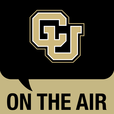
Summary: NOTE: Coloradans age 35 and older who have been recently discharged from the hospital with COVID infection interested in taking part in the AFTER program can go to <a href="https://www.cuanschutz.edu/graduate-programs/rehabilitation-science/resources/restore">movement4everyone.com</a> or call (303) 724-9590. There is no cost to patients and rehab equipment is available.<br> <a href="http://cuontheair.blubrry.net/wp-content/uploads/2021/02/2020_02_cuota_room.jpg"></a><br> As the deaths from COVID-19 in the United States hovers near 500,000, it’s important to note that some 17.5 million Americans have recovered from the virus: a recovery that can take a great deal of time and be difficult. Today on CU on the Air, we’re talking about a groundbreaking tele-rehabilitation program for COVID-19 survivors with <a href="https://medschool.cuanschutz.edu/physical-therapy-program/faculty-and-staff/jennifer-stevens-lapsley-ucd11518">Jennifer Stevens-Lapsley</a>, professor and director of the Rehabilitation Science Ph.D. Program, and <a href="https://www.cumedicine.us/providers/medicine/kristine-erlandson">Kristine Erlandson</a>, associate professor of infectious diseases, at the CU Anschutz Medical Campus.<br> <br> * The program, called Predictors of Recovery and the App-Facilitated Tele-Rehabilitation or AFTER for COVID Survivors, started enrolling a month ago.<br> * In addition to Stevens-Lapsley and Erlandson, a multi-disciplinary team is involved, including a pulmonary care doctor and works with patients who have recovered from an ICU stay in the hospital, specialists in motivational interviewing, behavioral health coaching, and a physical therapist with extensive experience with medical complex populations.<br> * Unique elements of this program involve making sure the intensity of rehab is adequate to progress patients quickly and a bio-behavioral portion of the program with emphasis on empowering patients to be able to do their own rehab in the future and adhere to the exercise program.<br> * The program has a unique web-based platform that it involves a home exercise component that has avatars and other ways to help facilitate adherence to exercise. The therapist can monitor what a participant is doing at home and then provide feedback and coaching during regular physical therapy sessions.<br> * Symptoms the doctors are seeing and treating often include a lot of fatigue: people go into this with some COVID fatigue, and then if they actually have COVID it’s just a profound, physical fatigue following the infection. A lot of weakness, shortness of breath, a big hit to endurance. Respiratory symptoms, cough, shortness of breath, wheezing. And strange COVID symptoms with the loss of taste and smell.<br> * Types of therapies underway include resistance training, such as mini squats, or lunges, or standing up from a chair and strengthen the muscles in the legs. A lot of balance activities and trying to make sure that people’s balance is challenged, but yet not that risk for falls. Also, quite a bit of work in the area of educating them regarding endurance because the fatigue that they experience is profound.<br> * An important piece of this program is the ability to attract and engage individuals in rural settings, creating a unique opportunity to provide services to people who otherwise wouldn’t have access.<br> * Long-term benefits include the understanding of how to treat patients with tele-rehabilitation from a distance that are medically complex, applying to many, many other populations down the road.<br> * Engagement with the program is 12 weeks, but follow-up continues up to six months.<br> * An important aspect of learning from this population is how to be creative and flexible in terms of problem solving. Whether it’s a technical problem or whether it’s a specific exercise to meet someone’s individual goals and being able to standardize care,
